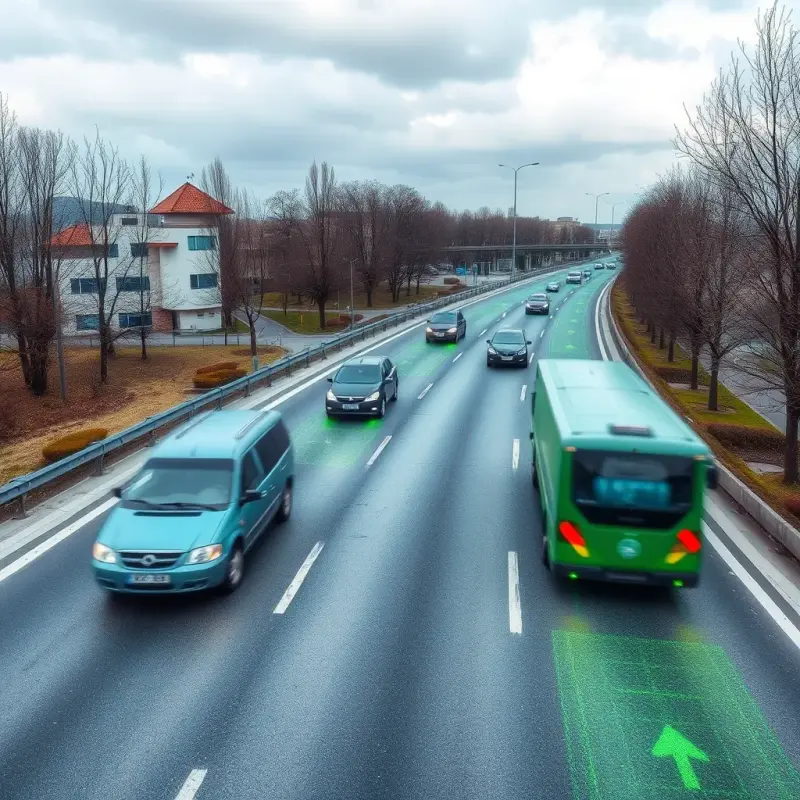Eco-Tech Innovations for Harnessing Energy from Traffic Movement: How Roads Can Power Our Future
As the world turns its attention to sustainable energy sources, innovative methods of harvesting energy are emerging in unexpected places. One of the most exciting and promising areas is harnessing the energy generated by moving vehicles on our roads. By transforming roads into energy-harvesting surfaces, we could reduce dependence on conventional power sources, and even generate electricity to support surrounding infrastructure. Here, we’ll explore the eco-technologies and methods that aim to turn everyday roadways into efficient energy-collecting systems, and the potential impact this could have on urban and rural environments.

How Roads Can Collect Energy
Roads endure significant mechanical stress from the weight and movement of vehicles. This kinetic energy, if captured, has the potential to be converted into electricity. The two most popular eco-technological approaches for energy collection from roads involve piezoelectric materials and solar panel integration:
-
Piezoelectric Energy Harvesting
Piezoelectric materials generate electricity when subjected to pressure. By embedding piezoelectric sensors within road surfaces, energy can be produced every time a vehicle drives over them. For example, each time a car’s wheels apply pressure to a piezoelectric sensor, a small amount of energy is created. While one vehicle may not generate a lot, the constant movement on busy roads could result in substantial energy output. -
Solar Panel Integration
Solar panels can be built directly into road surfaces or alongside roads. Unlike conventional solar setups, road-integrated solar panels use specially engineered glass layers that are durable enough to withstand the weight of heavy vehicles. These panels can power nearby infrastructure, including streetlights, traffic signals, and even charging stations for electric vehicles. Roads covered with solar panels in sunny areas can capture large amounts of energy daily, providing a clean, renewable power source.
Examples of Energy-Harvesting Roads in Action
Israel’s Smart Road Network
Israel has been pioneering energy-harvesting roads that use piezoelectric technology. In Tel Aviv, piezoelectric sensors were embedded into sections of the highway, and initial tests showed that this approach could power roadside equipment and lights. Expanding these pilot roads into larger networks could transform urban infrastructure in the region.
France’s Solar-Powered Roads
In France, sections of the highway have been transformed into solar roads. These roads collect solar energy throughout the day and distribute power to nearby communities. The solar panels, designed to handle traffic and extreme weather, are positioned along the road to capture the maximum amount of sunlight without interfering with driving conditions.
Challenges and Considerations
Although the concept is compelling, energy-harvesting roads face unique challenges. Here are some of the main considerations:
-
Durability: Roads that collect energy must withstand constant wear, weather, and weight. While new materials are being developed for this purpose, such as highly durable glass for solar panels, these materials are still more costly than traditional asphalt or concrete.
-
Energy Efficiency: For energy-harvesting roads to be practical on a larger scale, they must efficiently convert collected energy. Piezoelectric sensors, for example, need improvements in conversion efficiency to be widely viable.
-
Maintenance and Costs: The installation and upkeep of energy-collecting systems are currently expensive compared to traditional road maintenance. Regular maintenance is crucial for maximizing energy output, but it also increases the costs associated with road upkeep.
Potential Impacts and Future Outlook
With the right investments in technology, energy-harvesting roads could serve as reliable, supplementary power sources for urban areas. This energy could power nearby infrastructure, from streetlights and traffic signals to charging stations for electric vehicles, helping reduce the load on conventional power grids.
In the near future, we could see pilot projects and partnerships between governments and tech companies. These projects would allow engineers to test new designs, measure energy output, and refine systems for wider adoption. Additionally, as eco-technologies evolve, installation costs could decrease, making energy-collecting roads more feasible for cities globally.
Articles
Register for our notifications and have the newest and most intriguing articles sent directly to your email.